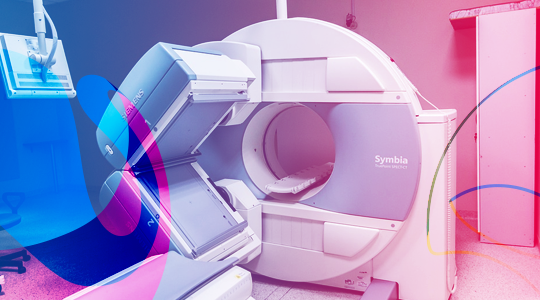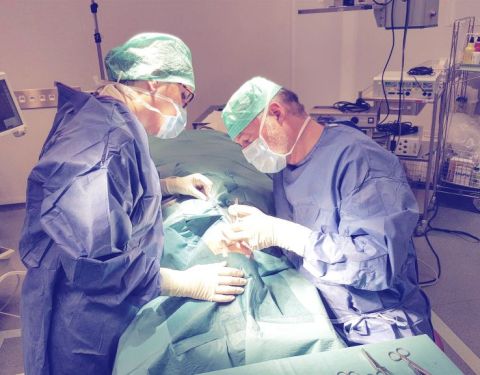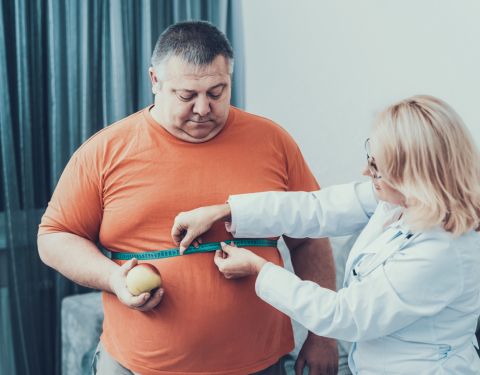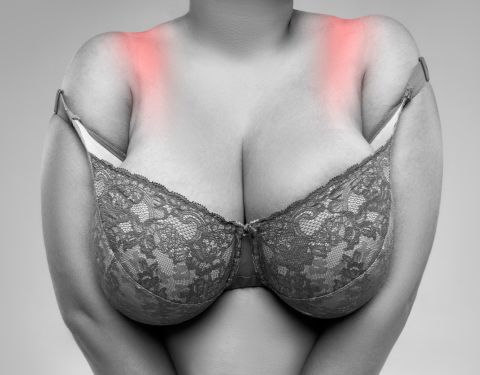In this article, we will speak about Brachioplasty or arm lift. The skin on the inner arm is very thin. Because of that, regardless of fat hypertrophy, in this zone, there is often a sagging of skin.
The aim of the operation is to decrease fat infiltration by means of liposuction, remove extra skin and firmly stabilize the remained skin for its effective lifting.
The arm lift isn’t covered by compulsory health insurance, except obesity because of bariatric surgery. In this case, under certain conditions, it can be covered by compulsory health insurance.

Before brachioplasty
A thorough checkup will help to define the most appropriate type of operation. During the first consultation, you will be given exact information on the operation, its consequences, and the expected result. Also, you’ll be shown the location of a residual scar.
The usual preoperative examination is carried out according to prescriptions. The anesthesiologist will consult you about the chosen type of anesthesia not later than 48 hours before the operation.
It is strongly recommended to stop smoking, at least, a month before and a month after the operation (tobacco complicates the process of healing and can cause necrosis).
Within 10 days before the operation, no medicines containing aspirin can be taken.
On the eve and in the morning before the operation, it is usually recommended to wash skin with antiseptic soap.
Depending on the type of anesthesia you can be asked not to eat food (anything to eat or drink within six hours before the operation).

Type of anesthesia and conditions of hospitalization
An arm lift can be done under general anesthesia, under local anesthesia with intravenous injections of tranquilizers or even under local anesthesia in its pure form. The choice between these types of anesthesia will be determined during the discussion between you, your surgeon and the anesthesiologist.
Hospitalization conditions: Brachioplasty can be done “on an outpatient basis”, i.e. the patient can be released from the hospital on the same day after several hours of medical supervision. Nevertheless, brief hospitalization can be offered in certain cases. It starts in the morning (sometimes in the previous afternoon), and the patient can be released from the hospital on the next day.
Every time the skin on the inner arm becomes lose the separate liposuction will be insufficient and it will be necessary to repeat arm lift or brachioplasty.

Arm lift operation
Each surgeon uses his own method which will help to achieve the best results. Nevertheless, it is necessary to understand some general basic principles.
The first stage of correction is liposuction. Extra skin is removed, leaving a scar which location and length depend on the stretching of skin and type of operation.
The cut can be vertical, longitudinal on the inner arm, or horizontal in the armpit. Both types of cuts can be combined.

Arm lift with a longitudinal cut along the inner arm (from shoulder to wrist)
The aim of this operation is to eliminate the weakening of skin on the inner arm. First of all, it causes aesthetic discomfort (in wearing short sleeve clothes because of a saggy type of arms). Also, it causes functional discomfort (while moving or dressing; redness or maceration of the inner arm).
The first liposuction is done every time when there is a fat infiltration of this zone.
Extra skin is removed, starting from a longitudinal cut and along the inner arm. The area and relief of extra skin will be defined and designated during pre-operative consultation together with the patient.
The duration of the operation averages an hour and a half. It varies depending on the expected improvements.
The operation demands particularly accurate operational indications, full information on the patient and his informed consent.
Considering disadvantages of this type of lifting (existence of scarring), every time when it is possible we try to offer a less ambitious operation which would provide a smaller number of scaring: it can be lifted with an isolated cut in the armpit, or a mixed-method, combining a cut in the armpit and a short vertical cut up to 10 cm in size.
Arm lift with a horizontal cut in the armpit
This type of operation is for patients having less significant problems with sagging of skin, first of all, in the upper third of the inner forearm.
From the only horizontal cut hidden in the armpit and, if necessary, after the liposuction extra skin in the upper part of the inner arm is stretched. The seam on the crease of the armpit allows laying and lifting of residual skin.
The residual scar is, as a rule, hardly evident but the morphological result is less impressive in comparison with lifting with the vertical cut.
This type of Brachioplasty effectively removes extra skin and fat tissue (even a significant one) but leaves a vertical cut on the inner arm. Even if it gradually disappears it still remains visible and it will be difficult to hide it.
Duration of the operation of this type averages one hour.
This operation, being easier in comparison with a previous one, is practically always done in out-patient conditions under purely local anesthesia, or under local anesthesia with intravenous injections of tranquilizers.
Such operation, of course, is less ambitious than a previous one but one of the main pluses of this method is that its simplicity and ease allow having an opportunity to repeat the operation one-two time in the first years after the previous operation. Such repeated operation will allow, depending on the request of the patient, improving skin laying and overall result by an additional resection of skin. Also, it will improve skin laying without scar elongation and its exit from the armpit.
A mixed or a combined method
It is about the synthesis of two previous methods which allows reaching a compromise on advantages and disadvantages including the question of scars.
This method combines a horizontal cut in the armpit and a short vertical cut up to 10 cm in size on the inner arm.
Anyway, at the end of the operation, the bandage with a sticky ace bandage is put on.
A postoperative period
Hospital discharge is, as a rule, on the same day or the next day after the operation.
During the postoperative period, ecchymosis (bruises) and edema (swelling) is possible. They will go away within 10-20 days after the operation.
Pain is, as a rule, bearable and it is treated according to its type: twitching, delayed onset muscle soreness, shooting pain.
The period of scarring can be slightly unpleasant because of the tension on the sides of a seam: during this period, it is better to avoid any sudden movements conducive to stretching.
It is necessary to suspend working life for 1-3 weeks, depending on the nature of the professional activity. Sedentary work can be resumed in several days.
Sports can be resumed gradually, starting with the 4th week after the operation.
Within the first 3 months, the scar is often pink, and then it starts disappearing. It disappears gradually from one to two years.
For 3 months the scar shouldn’t be affected by sunlight or UV-radiation.
The result after the operation
It is possible to judge the results only 6-12 months after brachioplasty. It is necessary to wait sometime before the scar will reduce.
The most often is the correction of fat infiltration and flabby skin which significantly improves morphological features of the arm. Functional improvement is also very noticeable, especially in the case of lifting with a longitudinal cut.
Thanks to the improvement in the working methods and gained experience, the results of this operation have been significantly improved.
The purpose of brachioplasty consists of improvement but not perfection. If your desires are realistic, the received result will satisfy you.
Nevertheless, it is about delicate surgery, that’s why even the strictest methodical actions can’t guarantee the absence of some disadvantages or even complications.
Possible disadvantages of brachioplasty
Most often, carefully prepared and correctly performed brachioplasty really helps patients to achieve good results that meet the patients’ expectations.
Nevertheless, there are some local disadvantages that are not real complications:
These disadvantages concern, in particular, a scar which can be more noticeable.
Sometimes the scar can look unsightly (hyperpigmentation, mass, shrinking, thickening). As for scars, it is necessary to know that they won’t be able to disappear completely. In this regard, it is worth remembering that if the surgeon stitches the patient, then the scar is the patient’s fact.
Scars are exposed to any additional risks during the healing process that can require some specific methods of treatment.
Results of liposuction can be characterized by a lack of correction, light residual asymmetry or rough surface.
These shortcomings are usually eliminated by additional treatment: it is about “small retouching” of surgical character which is done under local anesthesia, or under local anesthesia with intravenous injections of tranquilizers. At the same time, a repeat operation can’t be performed during the six-month post-operational period (stabilization of result).
Possible complications after arm lift
Though brachioplasty is usually done because of esthetic motives, it is, nevertheless, the real surgery which has the same risks as any other operation, even the easiest one.
It is necessary to distinguish anesthesiology complications from surgical complications.
As for anesthesia, during a consultation, the anesthesiologist will inform the patient on possible anesthesiology risks. It is necessary to know that anesthesia can sometimes cause unpredictable reactions in an organism but they can be treated. If you address the competent anesthesiologist, such risks are very small.
It is also necessary to know that methods and drugs used for anesthesia, and also monitoring methods have been considerably improved for the last thirty years. It ensures optimum safety, especially, when it’s not an emergency operation.
By choosing the competent and qualified plastic surgeon specializing in this type of operations you maximally limit risks, but of course, you can’t eliminate them completely because arm lift is one of the most delicate operations in plastic and cosmetic surgery.
Among such possible complications it is necessary to mention the following:
General complications:
Thromboembolic complications (phlebitis, pulmonary embolism) are in general quite rare, but they are one of the most dangerous ones. Strict preventive measures have to minimize the frequency of such diseases: it is necessary to wear an anti-thrombotic bandage, get up early, take anticoagulants.
Local complications:
- A hematoma, being quite an exceptional case, can be removed in order not to worsen the esthetic quality of the result.
- A microbial place is especially favorable for the development of infection. In order to avoid it, you should strictly follow pre- and postoperative hygiene procedures until the full healing.
Treatment may include prescribing of antibiotics and, depending on the situation, surgery, and, perhaps, a drainage. Sometimes there are non-esthetic consequences.
- Sometimes there are lymphatic allocations which can be followed by a tumescence. It is punctured and then it completely dries up without special consequences.
- Slow healing can occur as well: it increases the postoperative period.
- Skin necrosis can occur as well but it is limited and localized. Smokers have necrosis more often, especially if they continue to smoke. Prevention of necrosis consists in right and strictly kept treatment.
- There also can be a sensitivity change, in particular, a decrease in sensitivity on the inner arm: normal sensitivity is most often restored within 3-6 months.
Conclusions
Generally, you shouldn’t overestimate risks but at the same time, you should understand that every surgery, even the easiest one, is always risky.
When you address a qualified plastic surgeon you will be sure that he has the necessary education and professional skills to avoid complications or, in the case of need, effectively treat them.
Contact us for more information


















